Quality Assurance
We guarantee top-quality epoxy resin products that are made to achieve the highest safety standards with our food-safe resin coating, ensuring your peace of mind.
Wood rot happens. Even on the best-maintained boats, moisture finds its way into vulnerable areas—transoms, deck cores, stringers, and hull planking. Once rot starts, traditional solutions often feel like temporary fixes. That's where marine penetrating epoxy enters the picture.
But here's what many boat owners don't realize: penetrating epoxy isn't magic. It's chemistry. The right product, applied correctly, can stabilize deteriorated wood and extend the life of structural components by years, possibly decades. The wrong approach? You're just sealing problems underneath a surface layer.
Regular epoxy sits on top of surfaces. It creates a coating, bonds materials together, or fills gaps. Penetrating epoxy does something fundamentally different—it soaks into the wood fibers themselves.
The secret lies in viscosity. Penetrating epoxy formulations are incredibly thin compared to standard marine resin systems. This low viscosity allows the epoxy to flow into tiny cracks, pores, and deteriorated wood cells that thicker products can't reach. Once it's deep inside the wood structure, the epoxy cures and essentially petrifies the damaged fibers.
Think of it this way: standard epoxy resin gives you maybe 1/16 inch of penetration if you're lucky. A proper penetrating sealer can soak 1/4 inch or deeper into the wood, depending on how porous the material is and how you apply it.
Epoxy King's marine penetrating system achieves this through careful formulation. Their product maintains low enough viscosity to flow freely while still providing the structural reinforcement needed for marine applications. It's a balance that took years to get right.






Let's be honest about what this product can and can't do. I've seen boat owners treat penetrating epoxy like a cure-all, pouring it on seriously compromised wood and expecting miracles. That's not how it works.
Ideal Applications:
✅ Soft or punky wood that still has structural integrity
✅ Early-stage rot where fibers are weakened but not completely gone
✅ Sealing end grain on plywood and solid wood components
✅ Stabilizing transom cores before glassing
✅ Treating deck cores with minor moisture damage
✅ Preparing weathered wood for coating or paint
Poor Applications:
⛔️ Completely rotted wood with no structural value left
⛔️ Active leaks that need immediate mechanical repair
⛔️ Situations where wood replacement is the only safe option
⛔️ Underwater hull planking on boats still in the water
⛔️ Areas where structural loading requires solid, uncompromised wood
The key question: Does the wood still have shape and some firmness? If you can push a screwdriver through it easily, penetrating epoxy won't save it. But if the wood feels soft or spongy while maintaining its form, treatment might extend its life considerably.
Wood is basically a bundle of hollow tubes (cells) running lengthwise through the material. When wood is healthy, those cells are strong and intact. As rot progresses, fungi break down the cell walls, creating voids and weakening the structure.
Penetrating epoxy flows into these compromised cells through capillary action. The thinner the epoxy, the smaller the spaces it can enter. Some products include solvents that further reduce viscosity, though this creates trade-offs we'll discuss later.
Once inside the wood, the epoxy begins curing. Unlike water-based consolidants, epoxy doesn't shrink significantly as it hardens. It fills the voids left by rot and binds the remaining wood fibers together. The result is stabilized wood that's significantly harder and more moisture-resistant than before treatment.
Temperature affects penetration dramatically. Warm wood absorbs epoxy much better than cold wood. Professional boat yards often use heat lamps or work during warm months specifically to improve penetration. Cold epoxy on cold wood gives you minimal depth penetration—maybe just surface coating.
Here's where many DIY jobs go wrong. Penetrating epoxy can't penetrate through paint, varnish, oil, or dirt. Obvious, right? Yet I've talked to boat owners who poured expensive penetrating sealer onto painted transoms and wondered why it didn't work.
Proper preparation means:
Paint, varnish, gelcoat, whatever's there. Grind it off, sand it off, or use chemical strippers. The wood needs to be bare.
Solvents remove oil and grease. A good rinse removes dust and debris. Contaminated wood won't accept epoxy properly.
This seems counterintuitive when you're dealing with rot, but wet wood repels epoxy. The moisture content should be below 15% ideally, though some penetrating systems tolerate slightly damp wood better than others.
Sometimes you need to drill holes to get penetrating epoxy into enclosed spaces like transom cores. Small holes every few inches, angled downward, let the product flow where it's needed.
The Epoxy King system works on wood that's been properly prepared. Skip the prep work, and even the best product won't perform. It's frustrating to spend time and money on preparation, but the results justify the effort.
There's no single right way to apply penetrating epoxy. The best method depends on what you're treating and how accessible it is.
For horizontal surfaces or areas where you can create a temporary dam, flooding works well. Pour the penetrating sealer directly onto the wood and let it soak in. As the surface dries, add more. Keep adding until the wood won't accept any more product—this is called "saturating to refusal."
This method uses a lot of product but gives maximum penetration. It works great for deck cores, plywood surfaces, and transom tops.
Vertical surfaces need a different approach. Brush on thin coats, working the epoxy into the wood grain. Multiple coats work better than one heavy coat. Let each coat soak in before adding the next.
Pay attention to end grain—it absorbs far more epoxy than face grain. An end-grain surface might take five times as much product as the same area of face grain. Budget accordingly.
For enclosed spaces like hollow transoms or sealed compartments, injection sometimes offers the only practical approach. Drill small holes, insert a syringe or tubing, and inject penetrating epoxy into the void. Gravity helps here—drilling from the top and letting the product flow down works better than fighting gravity.
Epoxy King's low-viscosity formulation flows easily through small openings, making injection work more practical than with thicker products.
Some penetrating epoxy products contain solvents—typically acetone or other volatile chemicals that thin the epoxy even further. This improves penetration, sometimes dramatically. But there's a cost.
Solvents evaporate as the epoxy cures, leaving less solid material behind. A product that's 50% solvent by volume means you're only getting half as much actual epoxy as you paid for. The penetration might be better, but the structural reinforcement is reduced.
Additionally, solvents create fumes and odors. Working inside a boat hull with solvent-based epoxy can be unpleasant, potentially unsafe without proper ventilation. The environmental concerns aren't trivial either.
100% solids products contain no solvents—what you apply is what you get. They don't penetrate quite as deeply, but the reinforcement they provide is superior. For structural applications where you need maximum strength, 100% solids makes sense.
Epoxy King offers marine-grade penetrating systems formulated for deep penetration without excessive solvents. Their approach balances penetration depth with structural performance and user safety.
This is the question everyone asks, and there's no simple answer. Properly treated wood can last 10-20 years or more in marine service. Or it can fail in three years. The difference comes down to multiple factors:
Did the epoxy actually penetrate deeply? Was the wood properly prepared? Did you achieve full saturation? Poor initial treatment gives poor long-term results.
Wood that stays mostly dry lasts longer than wood constantly exposed to moisture. A treated deck core under a good gelcoat might last decades. The same treatment on constantly wet bilge timbers might only buy you five years.
Penetrating epoxy doesn't include UV blockers. Exposed treated wood needs paint or varnish for long-term protection. Without it, the wood surface degrades and the epoxy breaks down.
Structural components under heavy loading can develop cracks over time, even after treatment. These cracks provide new pathways for water intrusion.
I've inspected boats with 15-year-old penetrating epoxy treatments that still looked great. I've also seen failed treatments after just a few years. The difference usually traces back to application quality and subsequent maintenance.
Not exactly. Penetrating epoxy dramatically reduces moisture absorption, but it doesn't create an impermeable barrier. Water can still move through wood, just much more slowly. For true waterproofing, you need surface coatings in addition to penetrating treatment.
Sometimes yes, often no. Highly deteriorated wood might require multiple treatment cycles—flood it, let it cure, then treat again. The first application stabilizes the most damaged areas, and subsequent treatments penetrate deeper into the now-stabilized wood.
Fresh-cut lumber contains too much internal moisture for good epoxy penetration. The water inside the wood cells blocks epoxy absorption. Penetrating products work best on aged, dried wood—ironically, the wood that's most likely to have rot issues.
Product quality varies enormously. Some cheap "penetrating" products are just thinned-down regular epoxy. They might cost less, but the performance difference becomes obvious when you compare penetration depth and long-term results.
Here's where things get interesting. Penetrating epoxy rarely works alone as a complete solution. It's usually one step in a larger repair process.
Remove outboard motor and hardware
Grind away outer fiberglass skin
Treat remaining wood with penetrating sealer
Assess core condition and remove any completely failed material
Allow full cure (usually several days)
Fill voids with thickened epoxy or new plywood as needed
Glass over the repair with laminating resin and fiberglass cloth
Fair, prime, and paint
The penetrating treatment at step 4 stabilizes marginally compromised wood, reducing the amount of material you need to remove and replace. This saves time and money while improving the final repair quality.
For deck repairs, a similar process applies. Expose the core, treat what's salvageable, replace what isn't, then close everything back up properly. The penetrating sealer gives you more options—you're not forced to replace every piece of wood that shows any sign of deterioration.
Marine plywood presents unique challenges. The alternating grain direction of the plies means epoxy penetrates differently depending on which surface you're treating. Face grain (looking at the wide surface of a ply) accepts less epoxy than edge grain.
More significantly, the glue bonds between plies can delaminate when the wood gets wet. Once delamination starts, penetrating epoxy has trouble reaching the inner plies. You might treat the outer surfaces successfully while the interior continues deteriorating.
For plywood cores, drilling small holes at strategic locations helps. The holes let penetrating sealer reach inner plies that wouldn't get treated otherwise. Seal the holes afterward with thickened epoxy or leave them open if you might need to reapply treatment in the future.
Epoxy King's formulation works particularly well on plywood because the low viscosity allows it to flow along delamination lines, rebonding separated plies as it cures.
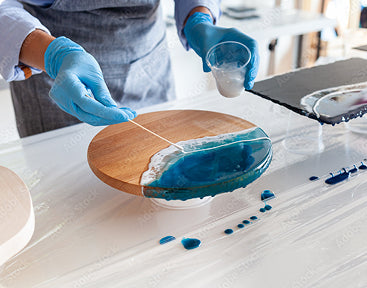
We guarantee top-quality epoxy resin products that are made to achieve the highest safety standards with our food-safe resin coating, ensuring your peace of mind.
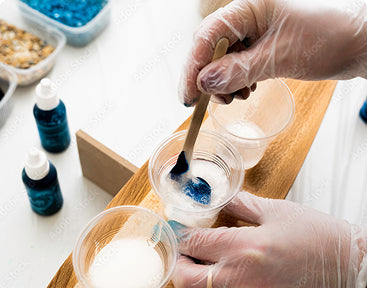
With years of experience in the industry, we have the knowledge and expertise to provide you with the best solutions for your food-safe projects.
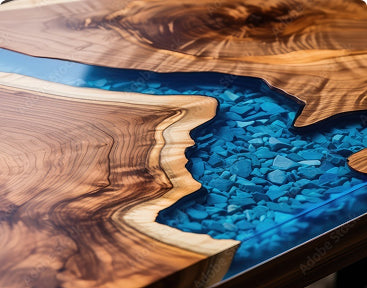
Our extensive range of epoxy resin products offers options for every need and budget, ensuring that you find the perfect fit for your project.
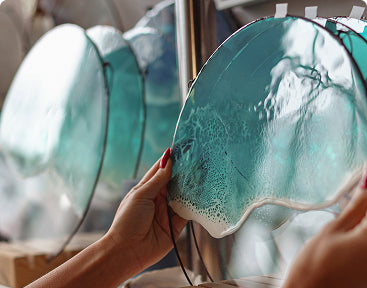
At Epoxy King, customer satisfaction is our priority. We strive to exceed your expectations with our products and service, earning your trust and loyalty.
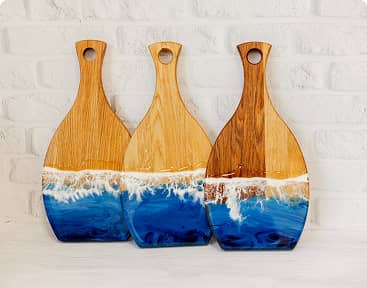
When you choose Epoxy King, you can count on reliable products and dependable service every time. Trust us for all your food-safe epoxy needs and experience the difference.
Here’s a comprehensive FAQ that covers various aspects
You can't apply penetrating epoxy whenever you feel like it. Weather matters enormously.
Temperature Requirements:
Humidity Factors:
Rain Considerations:
Most boat yards schedule major epoxy work during stable weather periods. If you're doing this yourself, wait for a good weather window rather than rushing the job during marginal conditions.
Working with any epoxy demands respect for safety procedures. Penetrating products have some specific concerns.
Personal Protection:
Ventilation Needs:
Skin Sensitization:
Perhaps the biggest concern with epoxy is allergic sensitization. Repeated skin contact can cause some people to develop allergies over time. Once sensitized, even minor exposure causes severe reactions.
The solution is prevention—avoid skin contact completely. If you do get epoxy on your skin, clean it immediately with waterless hand cleaner (not solvents, which drive it deeper). Then wash with soap and water.
Unopened marine penetrating epoxy typically lasts 1-2 years in proper storage conditions. Once opened, use it within a few months for best results.
Storage Guidelines:
Old epoxy sometimes develops crystals or cloudiness. Gentle heating can sometimes restore it, but if the product looks or smells wrong, replace it. Using degraded epoxy for critical repairs creates unnecessary risk.
Date your containers when you buy them. Rotate stock if you keep multiple containers. The small cost of fresh product beats the much larger cost of failed repairs.
Once you've treated wood with penetrating epoxy, what comes next? The epoxy itself needs little maintenance, but the wood around it certainly does.
Ongoing Requirements:
Treated areas should be inspected at least annually, more often if the boat sees heavy use or stays in the water year-round. Look for soft spots developing near the treated areas—rot often spreads outward from its original location.
Keep records of where you've applied penetrating epoxy and when. Five years later, you might not remember exactly which areas were treated. Documentation helps with future maintenance planning.
Penetrating epoxy doesn't exist in isolation. It works alongside other boat maintenance and repair products.
Compatible Systems:
Application Sequence:
Penetrating treatment typically comes first. Once it's fully cured, you can apply other products over it. The stabilized wood provides a much better substrate for subsequent repairs than untreated deteriorated material would.
Epoxy King offers complete marine epoxy systems designed to work together. Their penetrating sealer, laminating resin, filler, and coating products are chemically compatible and can be applied in sequence without adhesion concerns.
Problem: Epoxy Won't Soak In
Possible Causes:
Solutions: Warm the wood and epoxy. Clean more thoroughly. Wait for better weather. Try drilling small holes to create pathways into the wood.
Problem: Surface Stays Tacky After Curing
Possible Causes:
Solutions: Remove tacky layer by washing with water and light sanding. Reapply if needed. Ensure proper mixing and clean working conditions.
Problem: Wood Still Feels Soft After Treatment
Possible Causes:
Solutions: Apply additional coats. Consider whether wood replacement is actually needed. Check that product is within shelf life and properly stored.
Penetration depth varies based on several factors, but typical results range from 1/8 inch to over 1/2 inch in favorable conditions. The most important variables include wood porosity, moisture content, temperature during application, and the specific product formulation being used.
Soft, rotted wood generally accepts penetrating epoxy better than hard, sound wood. This might seem counterintuitive, but it makes sense when you think about the structure. Deteriorated wood cells have larger voids and more pathways for the thin epoxy to flow through. Dense, healthy wood has tightly packed cells that resist penetration.
Temperature dramatically affects how far epoxy will soak into wood fibers. At 70-80°F, penetration happens efficiently and you'll get good depth. Drop the temperature to 50°F, and the same product might only penetrate half as far. The epoxy becomes more viscous in cold conditions, flowing less readily through the wood's tiny passages. Some professionals use heat lamps or work inside heated spaces specifically to improve penetration results.
Wood moisture content creates an interesting situation. Bone-dry wood accepts epoxy beautifully, but wood with 12-15% moisture content also works well. Higher moisture levels block epoxy from entering the cells—the water physically occupies the space the epoxy needs. However, some slight moisture can actually help spread epoxy through capillary action along the wood fibers.
Application method matters too. Flooding a horizontal surface and maintaining a puddle of epoxy for several hours gives maximum penetration. Brushing thin coats on vertical surfaces works, but you won't achieve the same depth. For critical structural repairs, take the time to position the work horizontally when possible.
Epoxy King's marine penetrating system is formulated to maximize penetration without sacrificing structural properties. Their testing shows consistent penetration of 1/4 to 3/8 inch in typical marine wood applications, with deeper penetration possible in highly deteriorated material.
Yes, you can paint over cured penetrating epoxy, but the surface preparation steps you take will determine how well the finish adheres and how long it lasts. Cured epoxy creates a smooth, somewhat glossy surface that doesn't provide much mechanical grip for paint. Additionally, some epoxy formulations develop amine blush—a waxy surface film that actively prevents good paint adhesion.
The first step is checking for blush. Wipe the cured surface with a damp cloth. If the cloth shows any cloudiness or feels slippery, you've got blush that needs removal. Wash the surface thoroughly with warm water and a mild abrasive pad, then rinse and dry completely. Skip this step and your paint will peel off in sheets within weeks or months.
Even without blush, cured epoxy benefits from light sanding before painting. Use 120-180 grit sandpaper to create a slightly roughened surface. This gives paint something to grab onto mechanically. Don't sand through the epoxy layer—you're just scuffing the surface, not removing material. Wipe away all dust after sanding.
Primer choice matters when painting over epoxy. Marine epoxy paint systems work best when you use a compatible primer designed for epoxy substrates. Standard primers may work, but dedicated epoxy primers provide better adhesion and reduce the risk of subsequent coating failure. Two thin coats of primer generally work better than one thick coat.
Timing affects results too. Freshly cured epoxy (within 24-48 hours) still has active chemical groups on the surface that bond well with compatible coatings. After several days, the surface becomes fully inert and requires sanding for good mechanical adhesion. If you're planning to paint, doing it soon after the epoxy cures can actually improve the bond. Varnish over penetrating epoxy works similarly. The wood needs the UV protection varnish provides, since epoxy itself breaks down under sunlight. Use marine-grade spar varnish for exterior applications. Multiple thin coats build better protection than fewer thick coats, and sanding between coats improves adhesion.
Epoxy King products are designed for compatibility with standard marine coating systems. Their technical guidance recommends washing, sanding, and using appropriate primers for best results when painting or varnishing over their penetrating epoxy systems.
Wood rot doesn't fix itself. Every season you wait, the damage spreads deeper into structural components, turning a manageable repair into a major rebuild. Marine penetrating epoxy gives you the power to stop deterioration before it forces expensive replacements.
Epoxy King's marine-grade penetrating systems deliver the deep protection your boat needs. Their formulations balance penetration depth with structural performance, giving you results that last season after season. Whether you're stabilizing a soft transom, treating deck cores, or preparing wood for long-term service, the right products make all the difference.
Don't let minor wood problems become major failures. Take action now with proven marine penetrating epoxy technology that professional boat builders trust.
